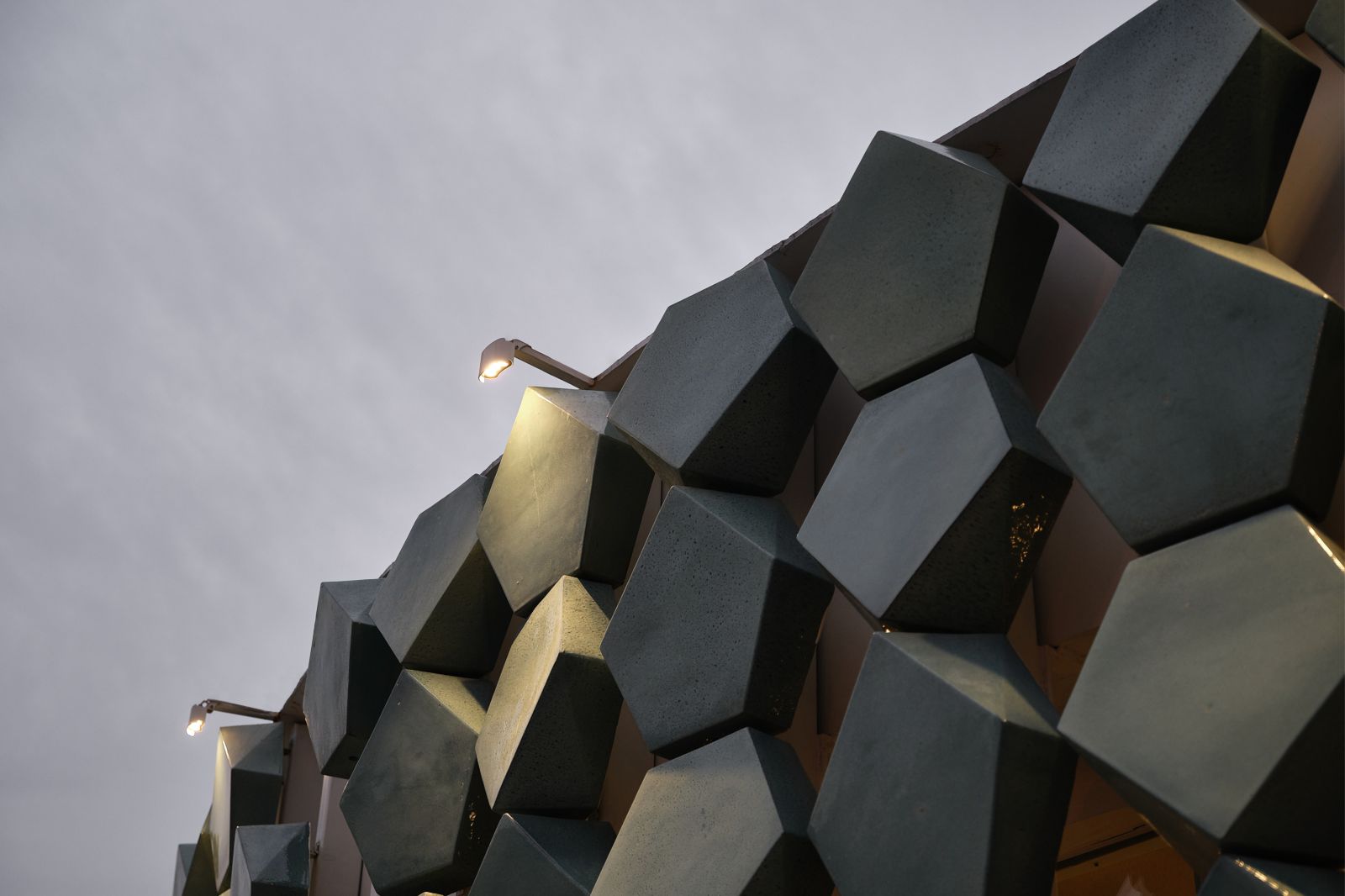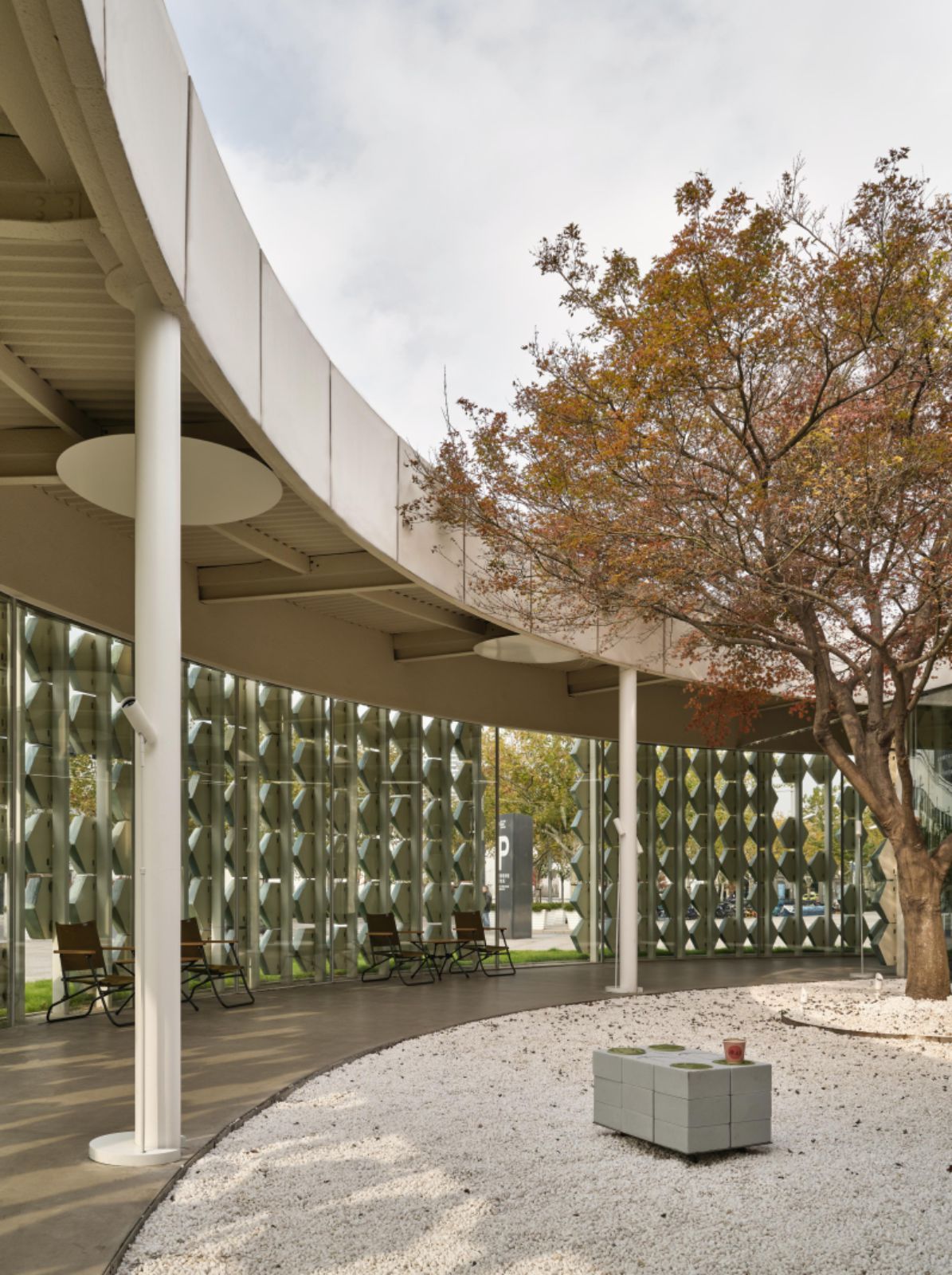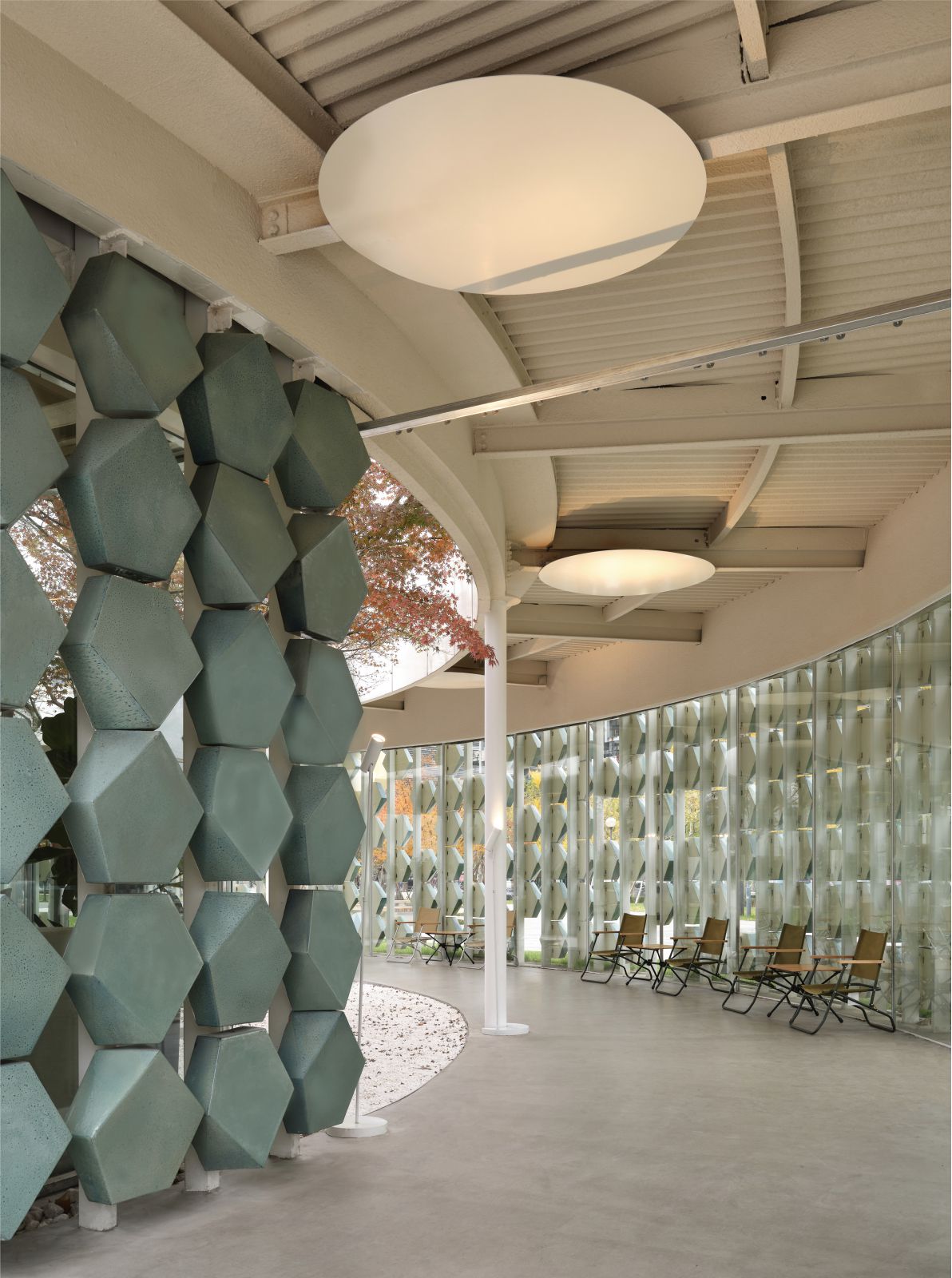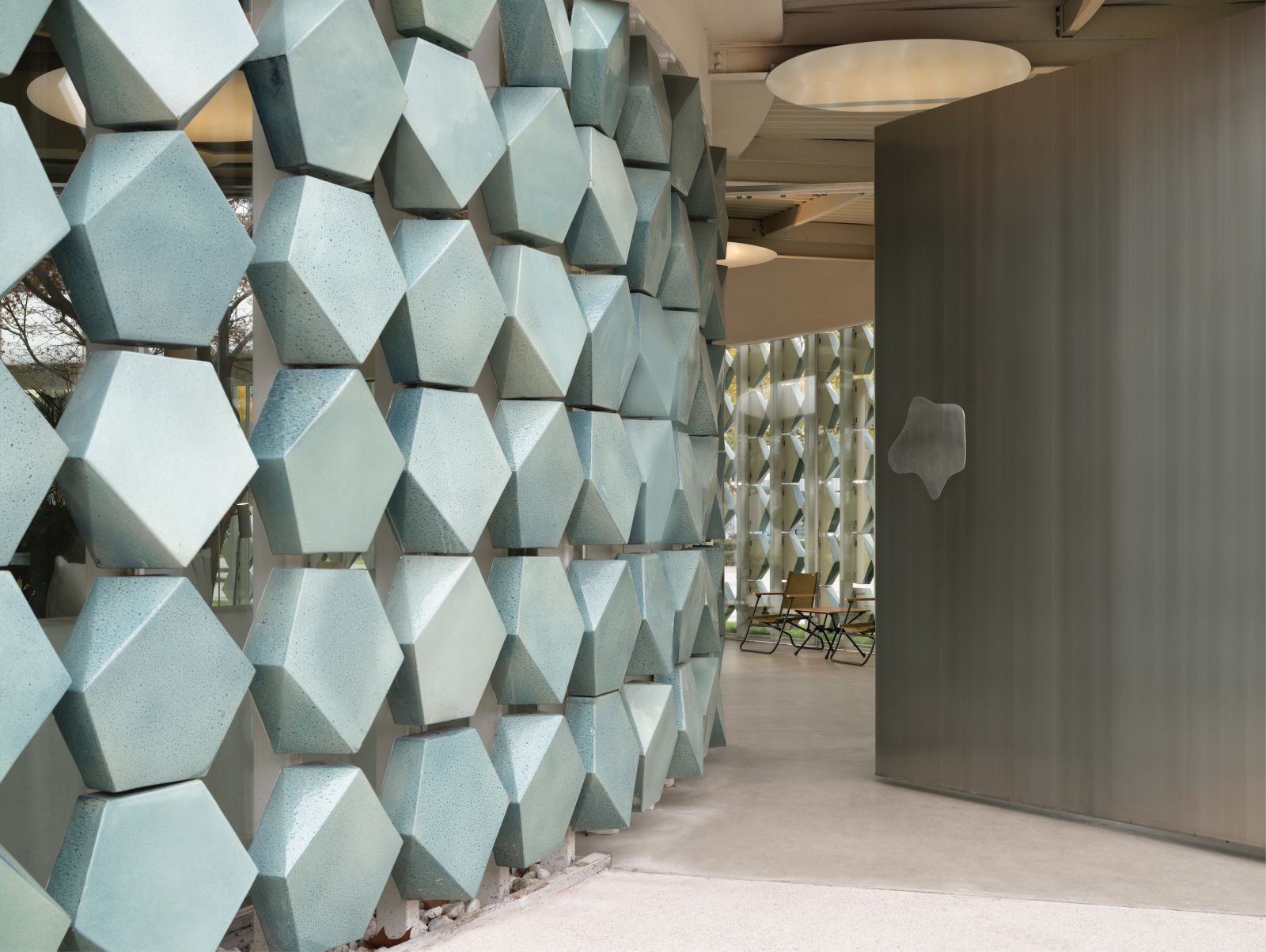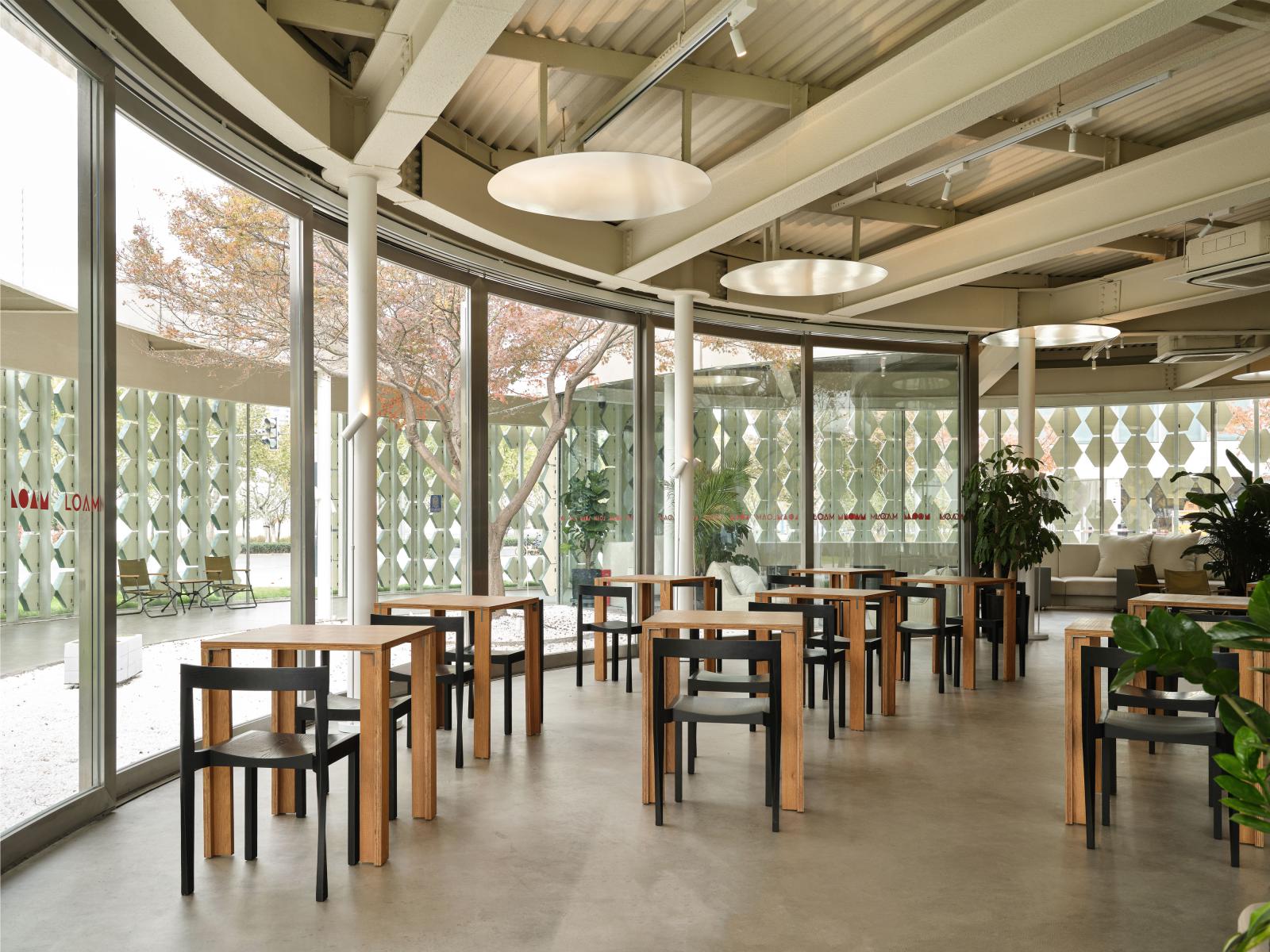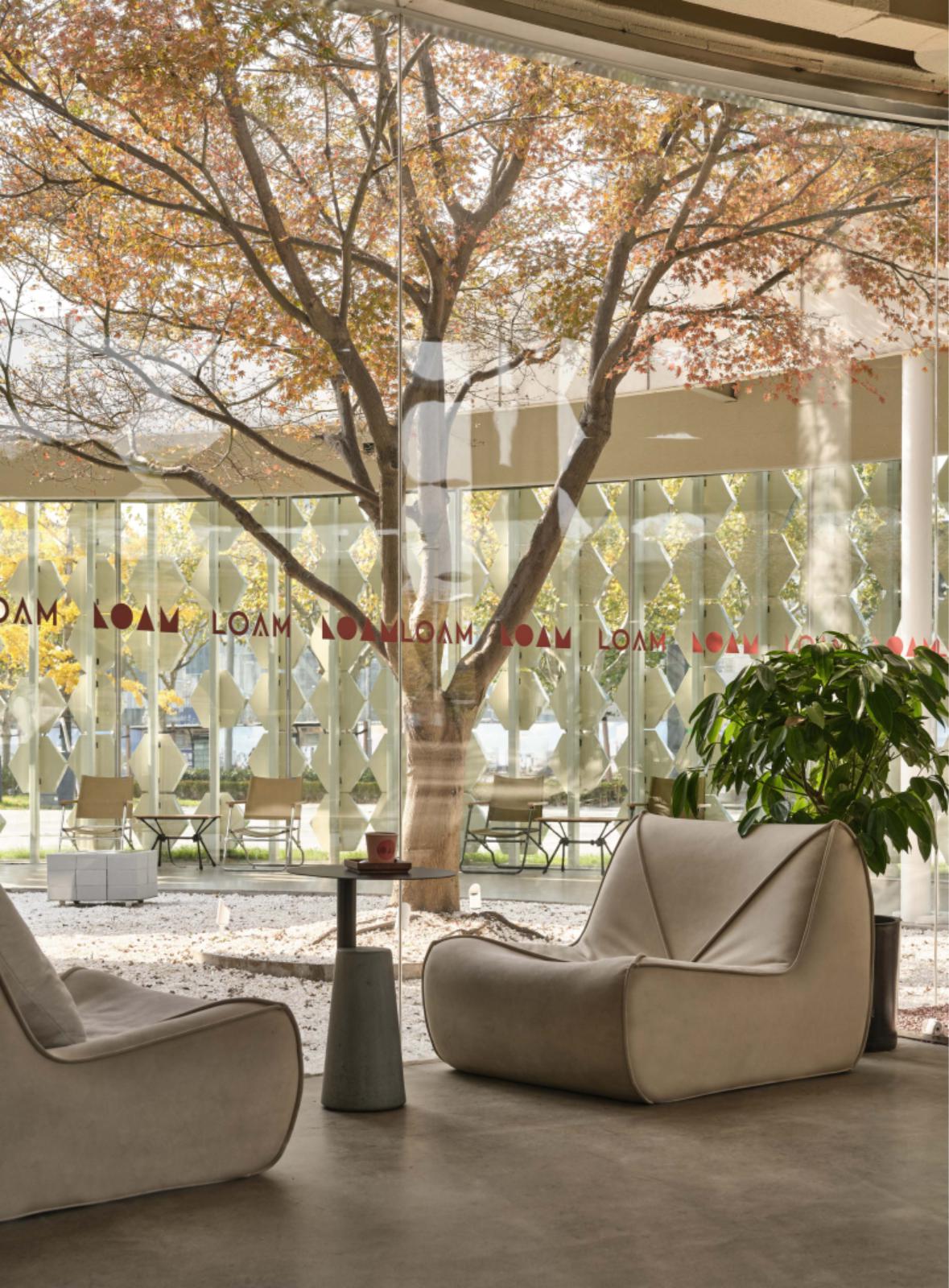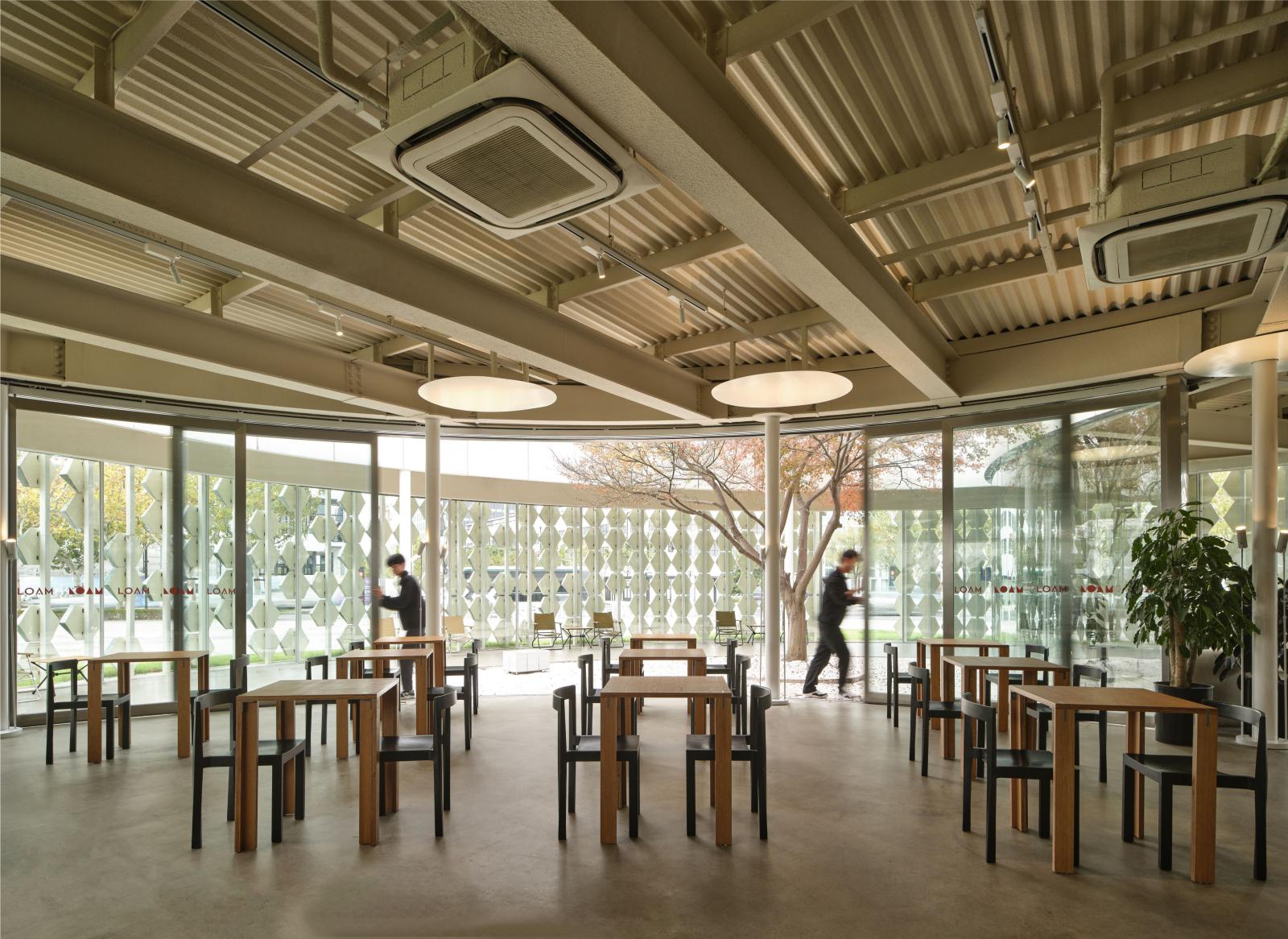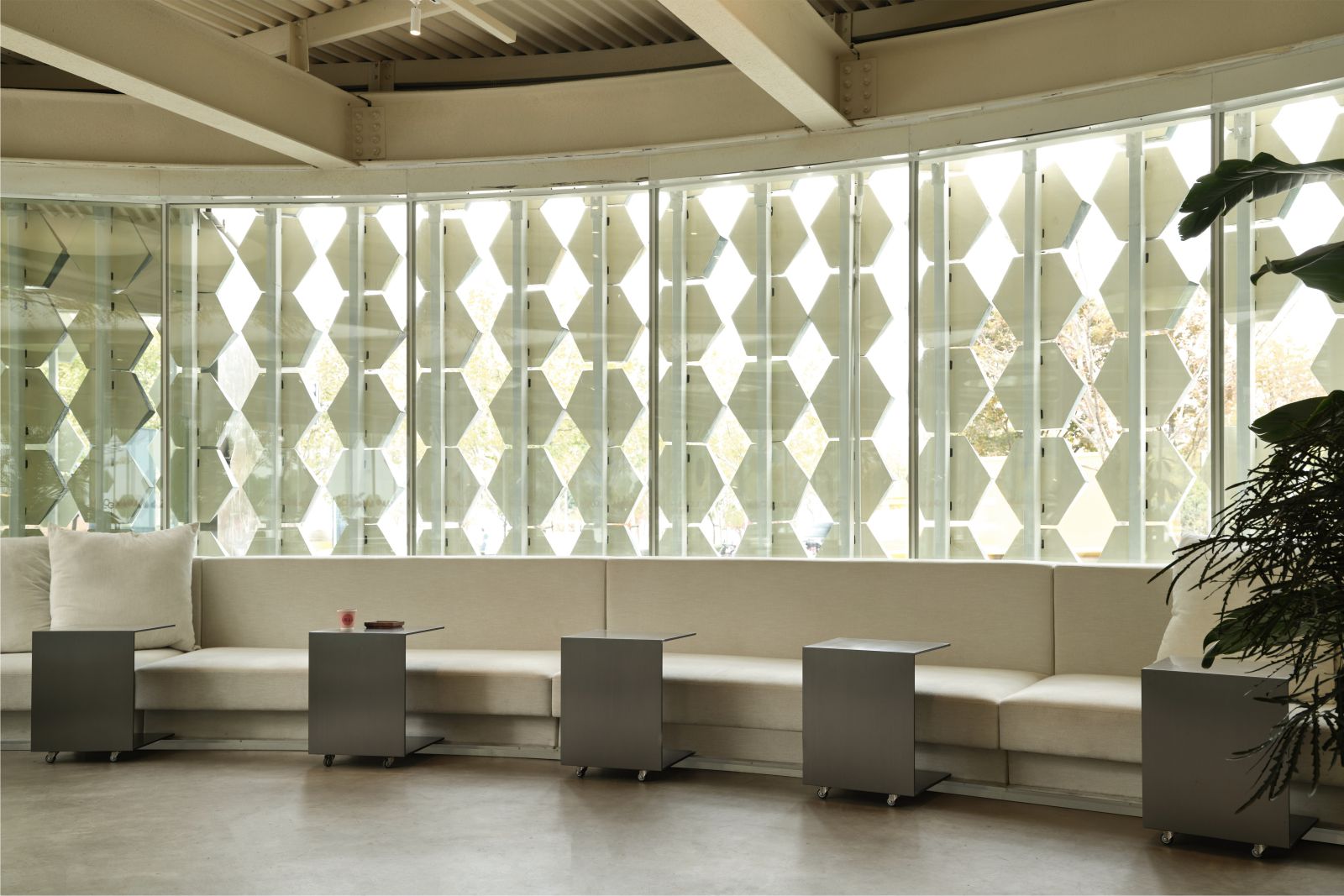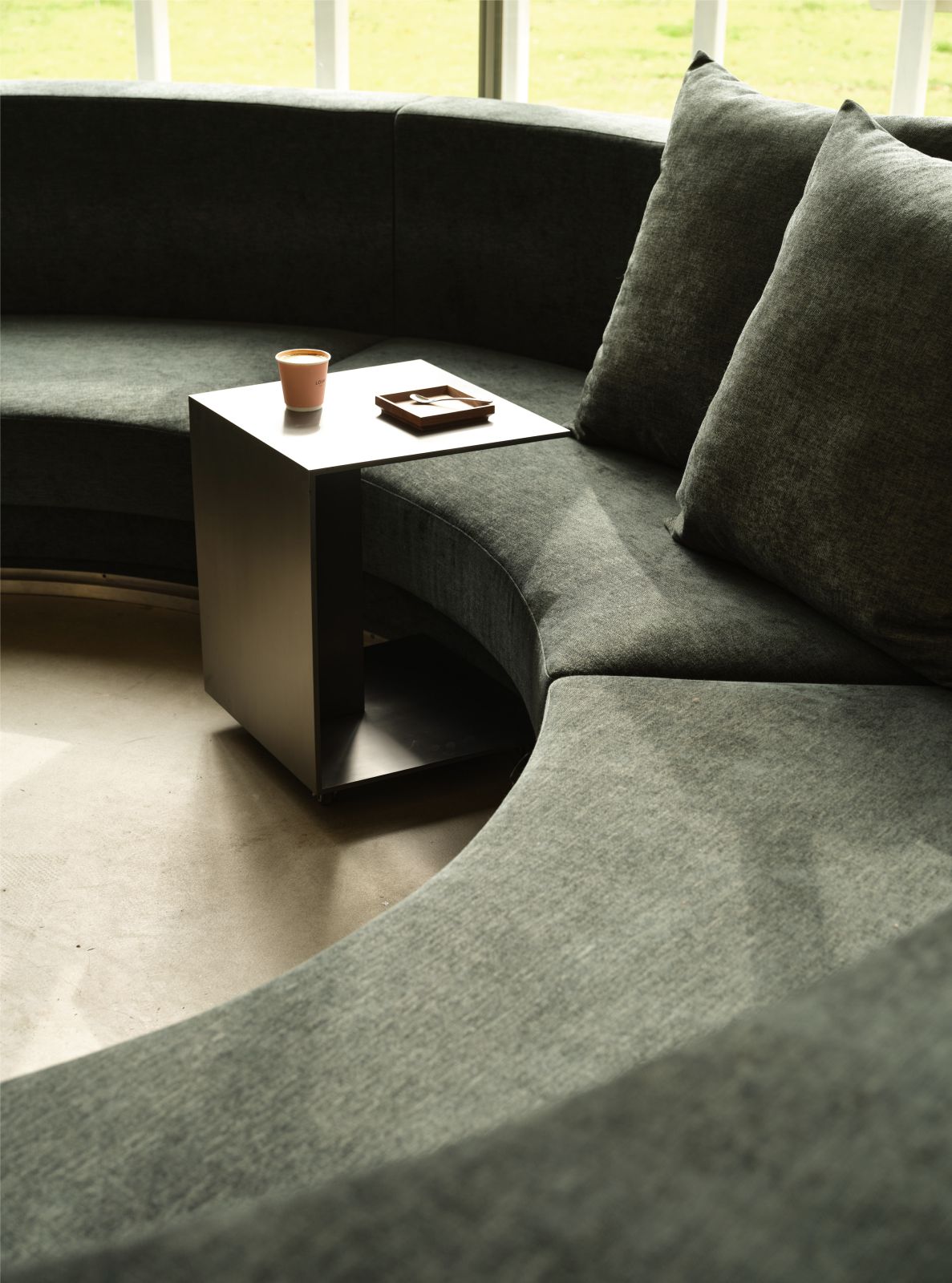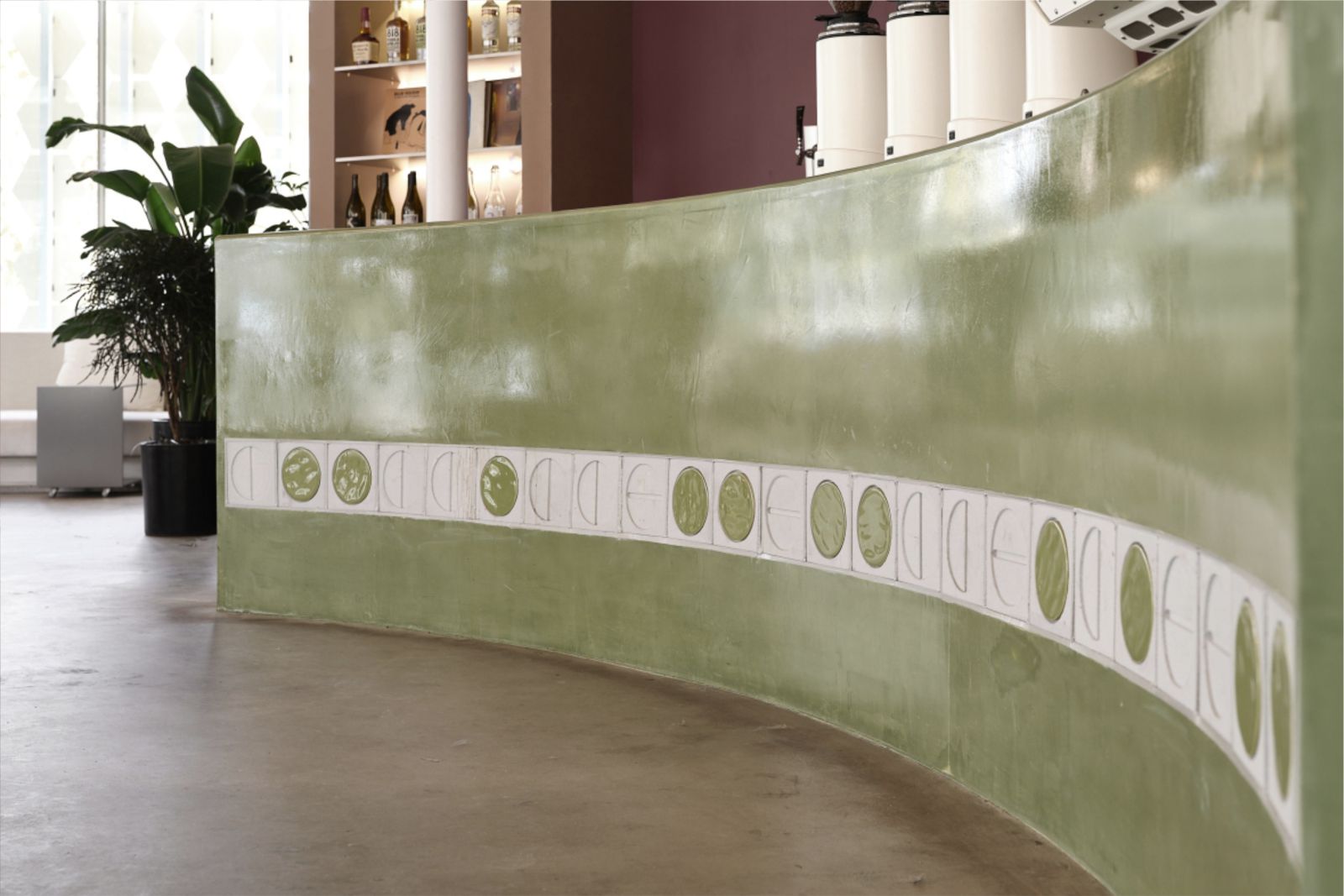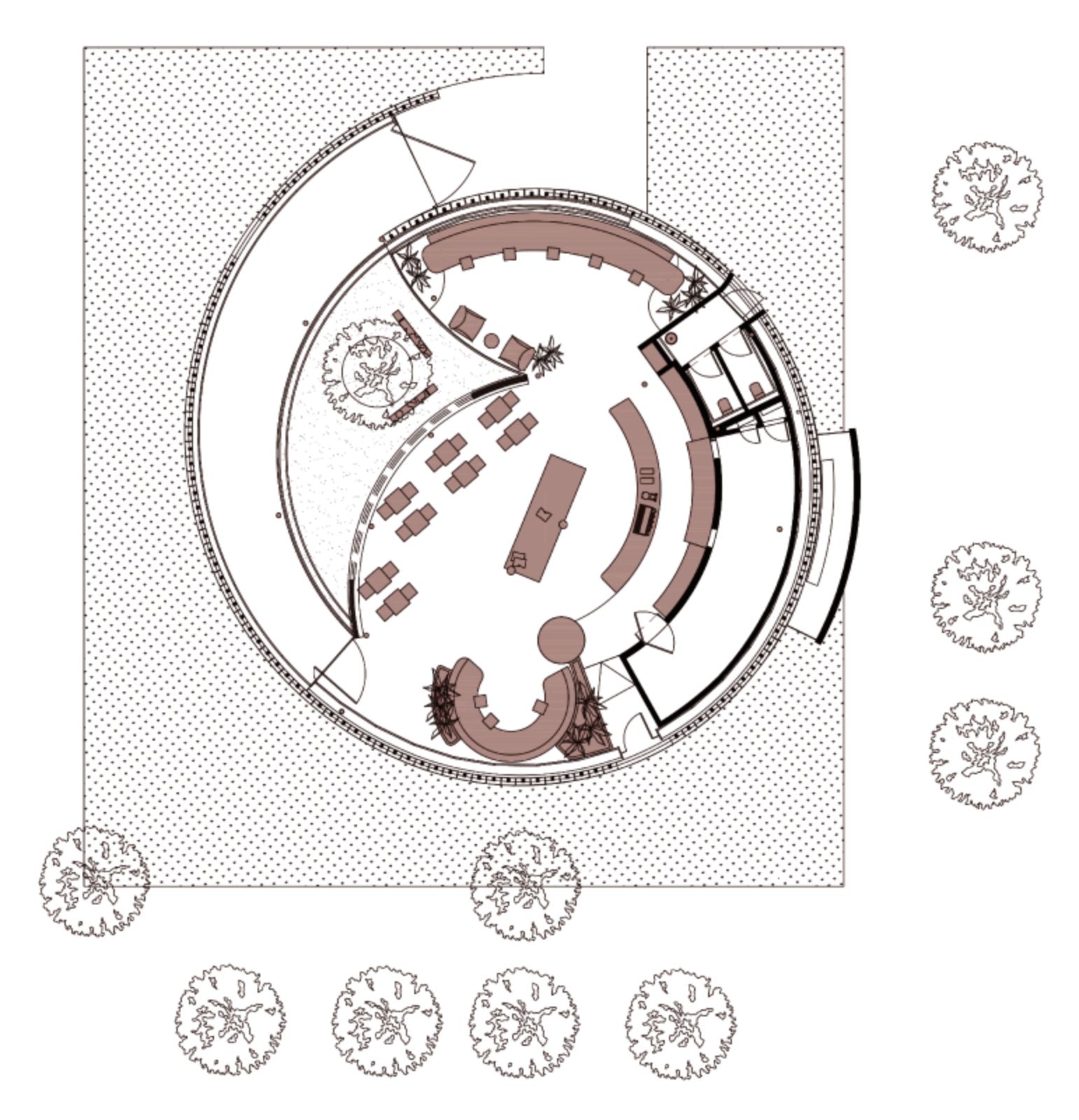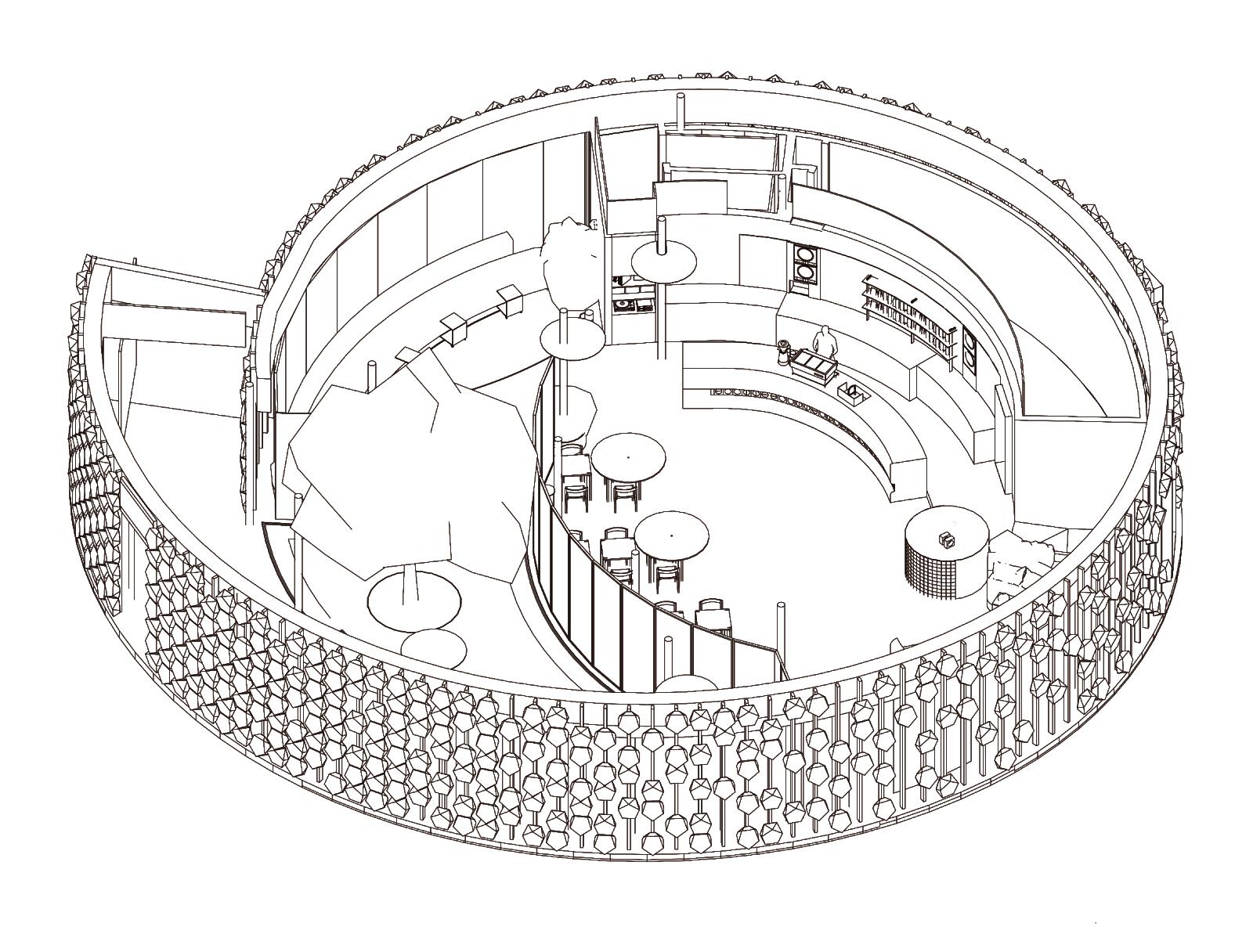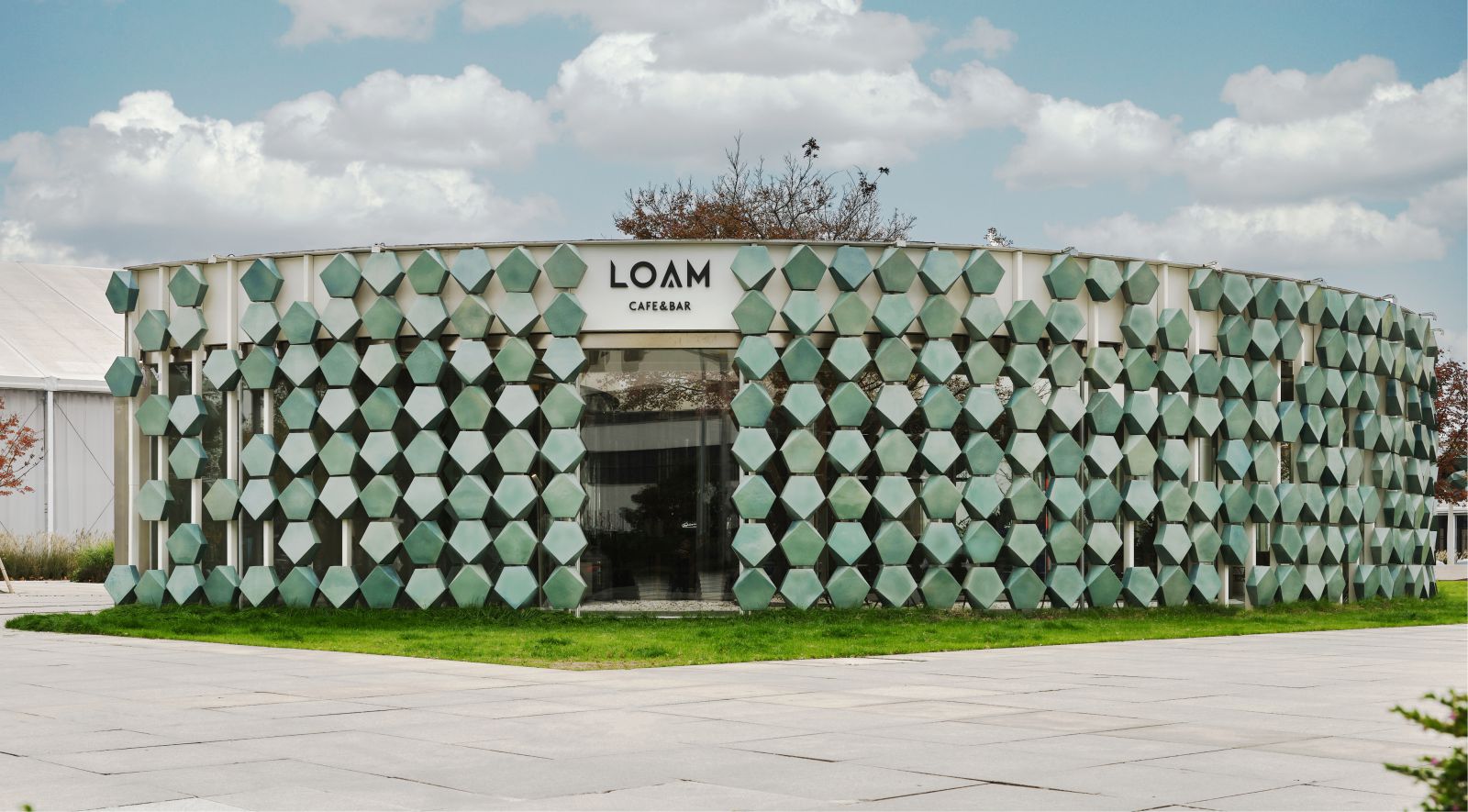STUDIO8 recently completed the interior and facade renovation of LOAM cafe&bar on the West Bund of Shanghai. In one of the largest art clusters in Asia, this spiral-shaped porcelain house with a distinctive facade stands out like an island in an urban oasis. The designers of STUDIO8 created an unconventional leisure experience for LOAM’s customers, allowing them to experience a piece of nature within a confined space in the city, and to feel like they can connect with nature during their stay in the space.
When STUDIO8 started on this project, they faced two challenges: the change in the building’s function and the incomplete facade of the original building. The design task STUDIO8 received was to transform the originally enclosed art exhibition space into a coffee shop and bar, allowing the space to easily change functions and scenes at different times and during special events. However, a big question was how to separate the interior and exterior facades of a (semi) transparent building? STUDIO8’s solution was to redesign the exterior, interior, and landscape of the building as a whole.
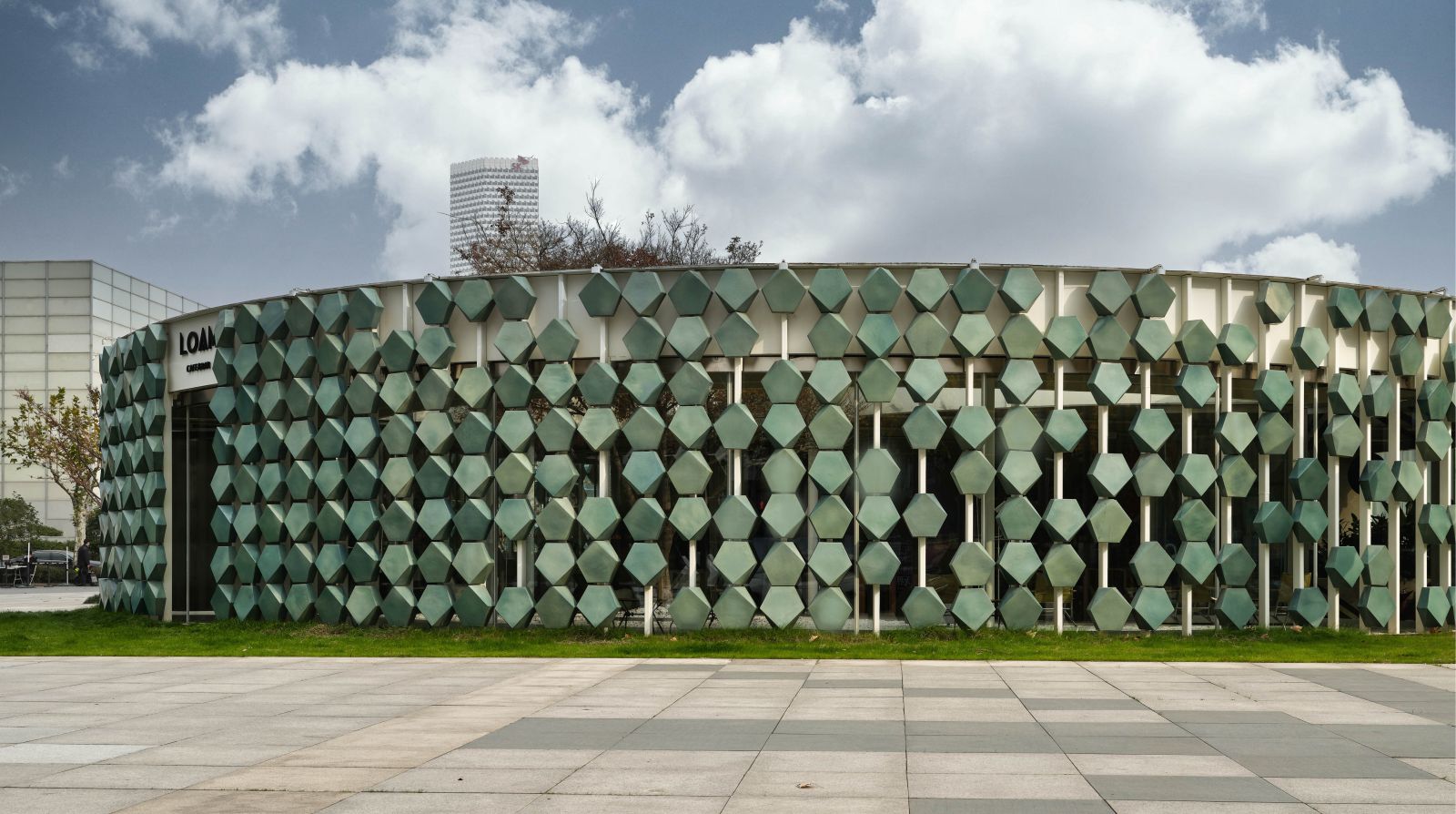
A talented design team designed the original building as an independent, full circle spiral structure with hundreds of green ceramic tiles covering the facade. However, due to various reasons, only half of the original facade had the porcelain blocks, which cannot fully present the original concept. STUDIO8 hoped to complete the facade in a manner consistent with the vision of the original design. After careful analysis of the interior and exterior spaces, the designers decided not to add additional elements, but only to redistribute the porcelain blocks of the existing facade to re-plan the facade order.
Starting from the entrance, they gradually reduced the density of the ceramic tile layout, creating a gradient effect, while in turn also respected the original architect’s vision. The porcelain tiles cast playful shadows under the changing sunlight, adding natural elements into the space. A green maple tree in the middle of the site initially inspired the design. STUDIO8 intended the process of entering LOAM to be like a “journey” around a tree – a gathering point where people can chat and have picnics.
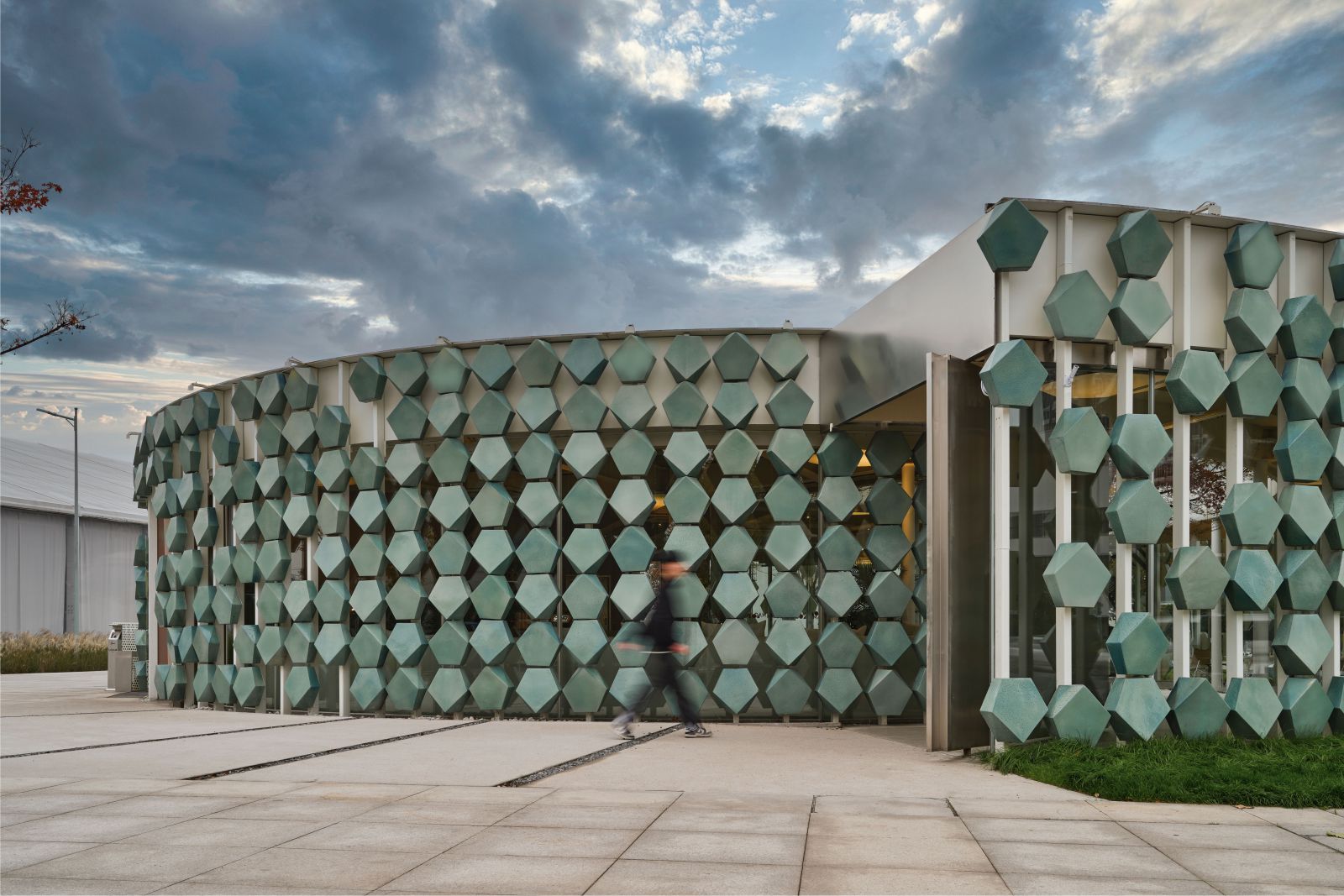
The designers wanted to first create a deceleration point that encouraged people to stay and enjoy the space, and in turn establish a connection with the surrounding environment. To achieve this, they added a lawn around the building to connect the porcelain structure to the surroundings, and opened a visual elevation passageway that faces the street corner outside and the maple tree inside, connecting the interior and exterior to obtain a clear view; the facade also intertwines with the texture of the lawn around the outside of the building, integrating the porcelain house into the urban green space.
The “journey” begins with the large pivot door of the main entrance; when closed, it subtly reflects the porcelain pieces, creating the illusion of a continuous complete facade. Coming to the semi-outdoor area, customers face the green maple. A path surrounds the courtyard covered with white gravel, where people can take a rest. This space opens up the boundary between inside and outside.
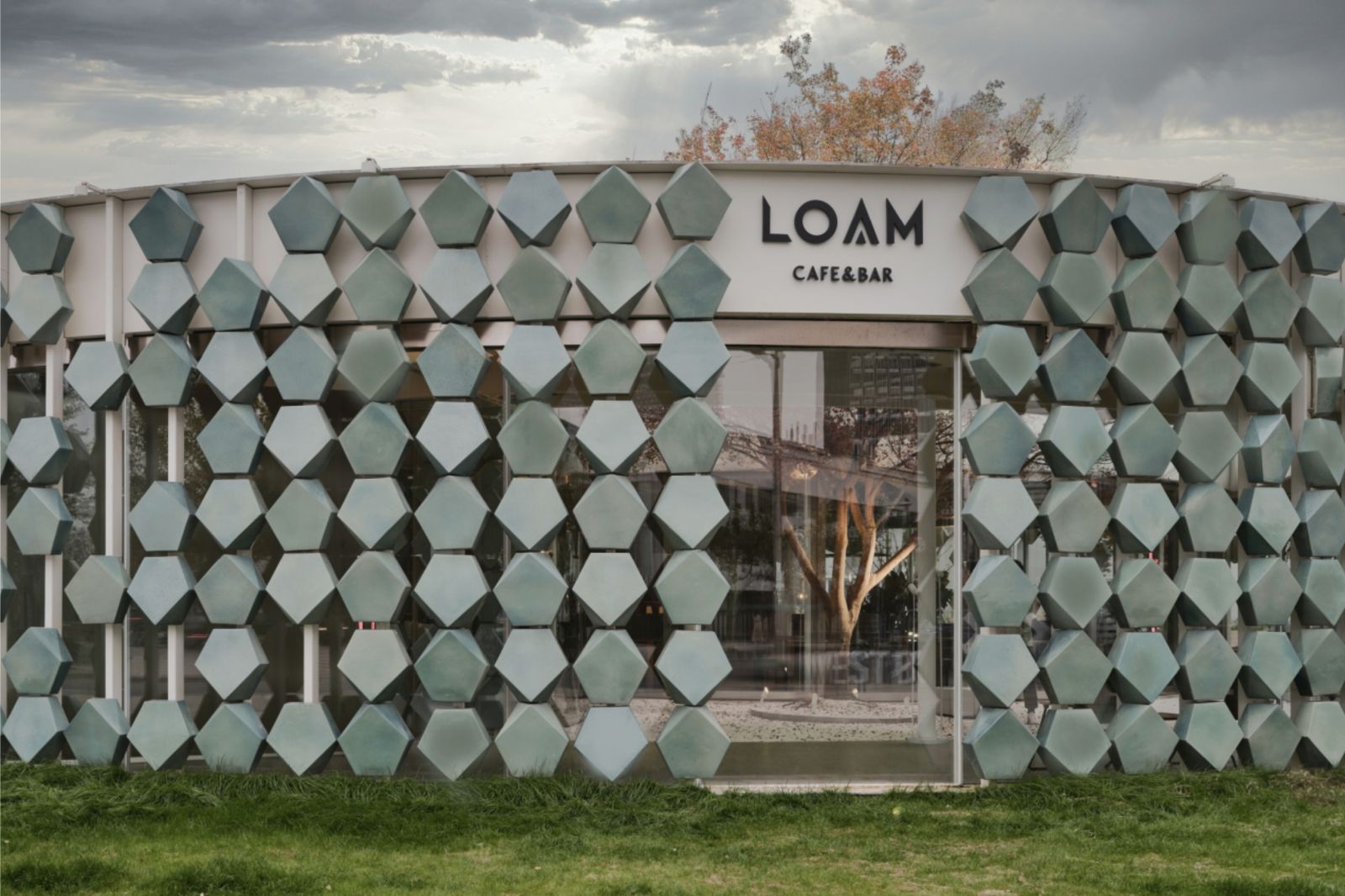
The moving light and shadows bring out the beauty of the smooth curves in the design, while blurring the indoor and outdoor spaces even further. Through the glass doors that lead to the interior space, the customers are introduced to a different atmosphere, from casual seating along the sliding doors, to a set of round sofas, the space continues into a more intimate area with very deep seat sofas and comfortable armchairs – all facing the courtyard, completing this “journey” to the tree.
The setting of seats is in line with the design language in each space, from fast to slow, from open to private. At the same time, it is linked with the facade. As the porcelains on the facade gradually disperse, the light levels also change respectively, accommodating different customers’ needs for resting, gathering or solitude. The underlying logic of this design is that people and space communicate in an interactive and open manner.
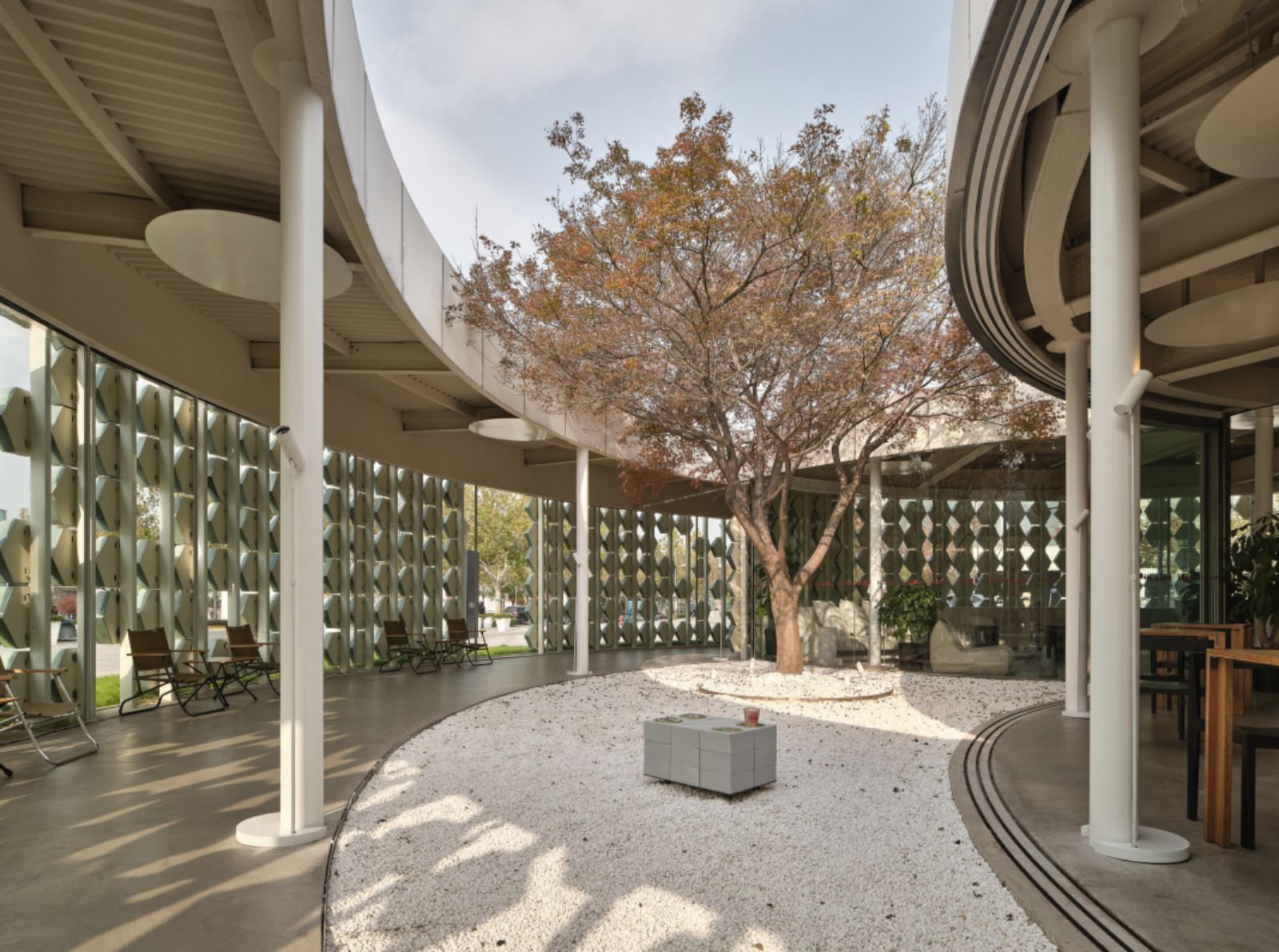
Following this, the designers from STUDIO8 created an immersive experience of “walking under the tree” through multiple narratives such as facades, interior spaces, colors, materials, lighting, and furniture. The ceiling does not have any excessive decoration, maximizing the vertical space. Instead of using a large number of ceiling lights, a common practice in interior design, the designers constructed a diffuse light system that can point to the ceiling directly: they developed a set of discs with a special surface treatment that create a uniform and soft diffuse aperture when directed towards the ceiling, highlighting several key areas throughout the site.
Customized steel side tables are connected by a special rail system on the bottom, allowing them to be adjustable. This, coupled with a glass sliding door that opens completely, breaks through the physical boundaries and thoroughly connects the people and the space. Constructed of specially made glazed concrete, a custom-made bar counter shares the same smooth curves with the architecture itself and reflects the texture of the natural “porcelain”. In particular, several custom circular tiles are added to echo the material of the exterior facade, emphasizing the indoor and outdoor connection.
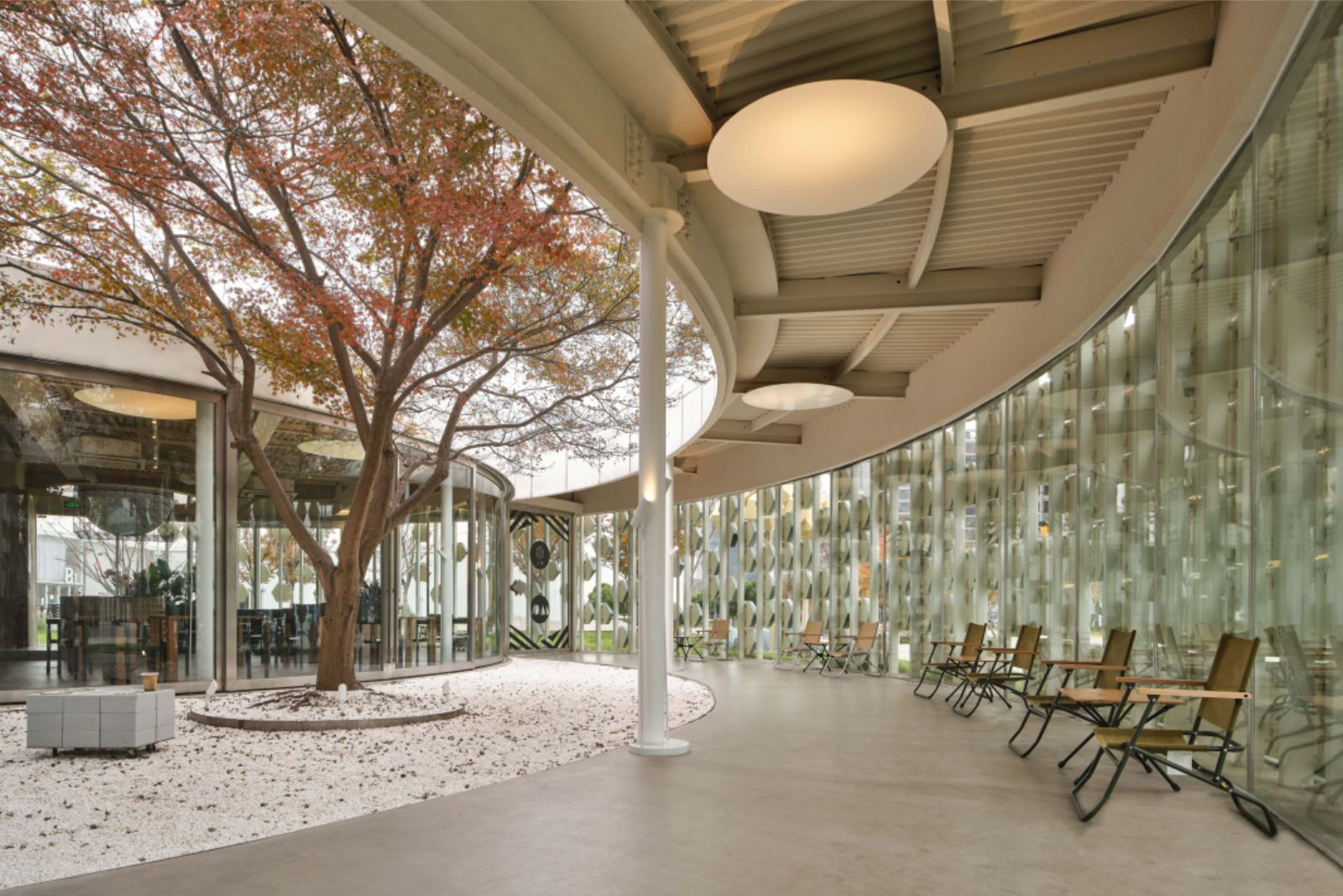
Another design detail of note is the door handle for the gate. It is based on the shape of melted porcelain blocks, introducing another dimension of material forms into the space. The originally closed exhibition hall is now dissolved into the urban green space, and is open to the public on various fronts. In terms of furniture, STUDIO8 customized a wooden table with a mortise and tenon structure and a movable table made of recycled foam ceramic materials, intentionally selecting a more environmentally friendly and innovative form of “porcelain”.
Throughout the renovation of the “porcelain house”, STUDIO8 broke away from the ordinary design approach by taking advantage of the site’s existing features and integrating people’s experience into the spatial journey. The result is a re-interpretation and transformation of LOAM that sparks new ideas in the cultural oasis of West Bund Shanghai. Source by STUDIO8.

- Location: Shanghai, China
- Architect: STUDIO8
- Lead Architects: Shirley Dong, Andrea Maira
- Team: Angel Gekov, STUDIO8 design team
- Client: LOAM YARD, Huge
- Gross Built Area: 253 sqm
- Completion Year: 2022
- Photographs: Sven Zhang, Courtesy of STUDIO8
